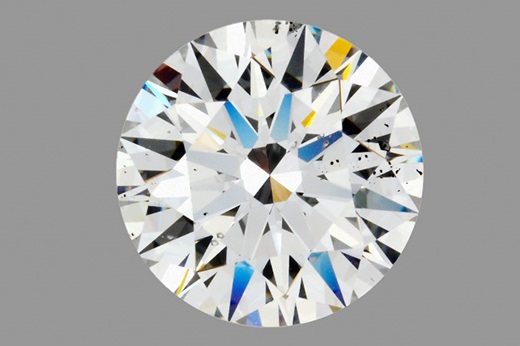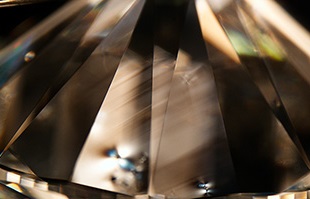'Lab-Grown' Diamond Turns Out to Be Natural
 RAPAPORT... A client of the Gemological Institute of America (GIA)wrongly submitted a natural diamond as a lab-grown stone, the organizationsaid.The GIA's Carlsbad laboratory recently received the round brilliant,2.23-carat, D-color diamond, which the customer had sent in for asynthetic-diamond grading report. "When a declared synthetic diamond is submitted to a GIAlaboratory, it is not often that the diamond turns out to be natural," GIAanalytics technician Garrett McElhenny and senior research scientist SallyEaton-Maga??a wrote in the Winter 2018 edition of Gems & Gemology, the institute's quarterly scientific journal.It was easy to mistake the stone for one created using High Pressure-High Temperature (HPHT). It had no clearly visible "strain"under detailed optical inspection - a pattern of lines that is usually absentin HPHT diamonds. The GIA only spotted the feature in a few scattered areas ofthe diamond following extensive efforts, it said.
RAPAPORT... A client of the Gemological Institute of America (GIA)wrongly submitted a natural diamond as a lab-grown stone, the organizationsaid.The GIA's Carlsbad laboratory recently received the round brilliant,2.23-carat, D-color diamond, which the customer had sent in for asynthetic-diamond grading report. "When a declared synthetic diamond is submitted to a GIAlaboratory, it is not often that the diamond turns out to be natural," GIAanalytics technician Garrett McElhenny and senior research scientist SallyEaton-Maga??a wrote in the Winter 2018 edition of Gems & Gemology, the institute's quarterly scientific journal.It was easy to mistake the stone for one created using High Pressure-High Temperature (HPHT). It had no clearly visible "strain"under detailed optical inspection - a pattern of lines that is usually absentin HPHT diamonds. The GIA only spotted the feature in a few scattered areas ofthe diamond following extensive efforts, it said. Further tests confirmed it was from the earth, but alsorevealed additional pitfalls: The stone contained dark, natural inclusions that othersmight have mistaken for metallic flux, a common feature of HPHT diamonds, theinstitute explained. "Subsequently, the client indicated that this stone wasbelieved to be synthetic after examination by another party in the trade,"McElhenny and Eaton-Maga??a reported.The case proves there can be exceptions to the generalguidelines for distinguishing between natural and lab-grown diamonds, theauthors added. "In this case, the correction worked to the client'sadvantage," they observed.Main image: The 2.23-carat natural diamond submitted to the GIA as a synthetic. Inset: The strain pattern visible in small areas of the stone. (Robison McMurtry/Garrett McElhenny/GIA)
Further tests confirmed it was from the earth, but alsorevealed additional pitfalls: The stone contained dark, natural inclusions that othersmight have mistaken for metallic flux, a common feature of HPHT diamonds, theinstitute explained. "Subsequently, the client indicated that this stone wasbelieved to be synthetic after examination by another party in the trade,"McElhenny and Eaton-Maga??a reported.The case proves there can be exceptions to the generalguidelines for distinguishing between natural and lab-grown diamonds, theauthors added. "In this case, the correction worked to the client'sadvantage," they observed.Main image: The 2.23-carat natural diamond submitted to the GIA as a synthetic. Inset: The strain pattern visible in small areas of the stone. (Robison McMurtry/Garrett McElhenny/GIA)